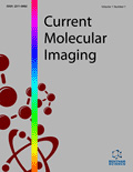Abstract
Beta cell mass is dynamic, and changes during neonatal growth and development, during pregnancy, and in response to chronic metabolic stress, such as obesity and diabetes. Molecular imaging techniques can be used to provide real-time readouts on subclinical changes in beta cell mass, and, in the process, enhance our understanding of the molecular processes that govern its regulation. The strategy of engineering beta cells to express endogenous contrast for imaging by fluorescence, bioluminescence and positron emission tomography (PET) has been especially useful in developing novel insights into the timing of the decline in functional beta cell mass during the progression of diabetes. There have also been some recent exciting developments in the use of MRI in detecting beta cell function by tagging the movement of cations across the cell membrane in response to glucose. While such imaging strategies may not be immediately translated to the clinic, they have provided the opportunity to directly visualize the islet development and formation as well as the subclinical declines in beta cell mass that precede the onset of overt diabetes. This review will discuss the impact of transgenic mouse models and MR imaging of cation flux on the field of beta cell imaging.
Keywords: Beta cell, bioluminescence, cations, fluorescence, islet, MRI, PET, transgenic.
 15
15

